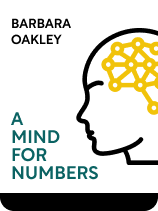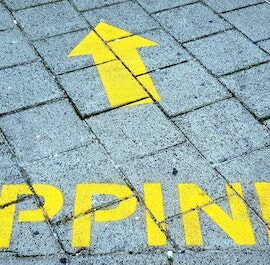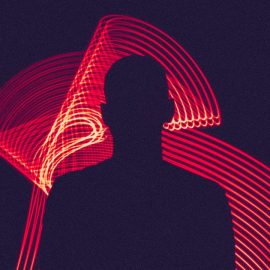

This article is an excerpt from the Shortform book guide to "A Mind for Numbers" by Barbara Oakley. Shortform has the world's best summaries and analyses of books you should be reading.
Like this article? Sign up for a free trial here .
How do habits develop? How can good habits help you study and learn more effectively?
Your habits—good or bad—have a major impact on your life. When you understand how habits work and how they develop, you can use them as a force for good. Author Barbara Oakley shares seven strategies for changing habits that you can put to work for you.
Continue reading to learn how to change a habit.
How to Change a Habit
According to Oakley, your study habits (good or bad) have a strong impact on your ability to learn math and science. Thus, knowing how to change a habit can make a big difference in your learning experiences.
Anatomy of a Habit
Oakley defines a habit as a pre-programmed activity that you perform without conscious input of mental energy. She explains that habits allow your brain to operate more efficiently, because exercising willpower takes a lot of neural resources, and habits allow you to act without using willpower. Tasks that you can perform automatically also give your brain a chance to operate in diffuse mode.
(Shortform note: In The Power of Habit, Charles Duhigg asserts that more than 40% of your actions each day are habitual. By extension, according to Oakley’s logic, that’s a large chunk of your day that can be dedicated to diffuse mode thinking. Duhigg also agrees with Oakley’s assertion that habits eventually become unconscious actions, adding that once a habit is fully developed, you do it on autopilot, with little to no control over that behavior. However, he clarifies that habits begin with a conscious choice to do something. It’s only when you repeat that choice again and again that the habit becomes unconscious.)
According to Oakley, habits develop via the same chunking process that condenses information in your brain and facilitates storage in your memory. A habit chunk in your brain consists of four pieces of information:
- The Cue: This is what stimulates your brain to execute the habit. Cues can be linked to people, places, times, feelings, or events.
- The Routine: This is the sequence of actions for you to execute when the habit is triggered by the cue.
- The Reward: You have to derive some kind of benefit from executing the routine for a habit to develop. Your brain executes the routine in response to the cue because it expects the reward. Only immediate consequences of the routine are stored as part of the habit chunk. This is why bad habits are possible: The reward is immediate but transient and the long-term consequences are negative, but the long-term consequences are not processed as part of the habit chunk, and thus do not automatically cancel out the reward.
- The Belief: Your habits are grounded in your perception of reality and of your own identity.
As an example, suppose you make a habit of reading your text messages immediately upon receipt. Let’s break this habit down into its four components:
- The cue is the ringtone your phone plays when you get a text.
- The routine might consist of reaching over to retrieve your phone from your pocket, entering your passcode to unlock your phone, and accessing the text-messaging app.
- The reward is the pleasure that you derive from reading text messages.
- The underlying belief could vary: Maybe you identify as a very respectful individual, and you believe that responding promptly to communications is an important part of showing respect. Or maybe you are a very social person and you believe in staying connected through text messaging.
| Comparing Habit Models Oakley’s habit model, consisting of cue, routine, reward, and belief, is similar to the models proposed by most other studies and books on the subject, but there are subtle differences and certain exceptions. Duhigg and Clear’s Models In The Power of Habit, Charles Duhigg asserts that habits are composed of three parts: the cue, the routine, and the reward. He describes these components in the same way Oakley does and echoes her assertion that habits form to conserve mental energy. Thus, Duhigg’s model is identical to Oakley’s except that he omits the belief component entirely. In Atomic Habits, James Clear says that habits are composed of four parts: the cue, the craving, the response, and the reward. Like Duhigg, Clear also omits the belief component from his habit model. Clear’s “response” is defined identically to Oakley’s “routine,” so the only other difference here is that Clear adds a new component: the craving. According to Clear, the cue doesn’t trigger the routine directly. Instead, the cue simply alerts your brain to the opportunity to obtain the reward. This creates a craving for the reward, and your brain executes the routine in response to the craving so that you obtain the reward. Oakley mentions in passing that habits can create cravings because your brain anticipates the reward as soon as it identifies the cue. Duhigg elaborates on this, and describes the role of cravings almost identically to Clear, even though he doesn’t include the craving as a component of his basic habit model. BJ Fogg’s Model In Tiny Habits, BJ Fogg presents a completely different model, which doesn’t distinguish between habits and other actions. The Fogg behavioral model consists of four components: the behavior, the prompt, the motivation, and the ability. Fogg’s “behavior” is the action that you perform. This correlates loosely to Oakley’s “routine,” but where Oakley’s habit routine is an action that is pre-programmed in your mind as part of the habit chunk, Fogg’s behavior could be any action that you know how to perform. Fogg’s “prompt” is anything that alerts you to an opportunity to perform a given behavior. This correlates reasonably well with Oakley’s cue. Fogg’s “motivation” is your desire to perform the behavior. This could correlate loosely with cravings, as described by Duhigg and Clear, but a craving stemming from your brain’s expectation of an immediate reward is only one of many factors that can contribute to your motivation. In Fogg’s model, conscious beliefs about the long-term consequences of the behavior, as well as your current level of willpower to act on those beliefs, affect your motivation. So do peer pressure and other external factors. Thus, Fogg’s “motivation” captures elements of the craving, reward, and belief in Oakley’s and others’ models, but it doesn’t exactly correspond to any of them. Fogg’s “ability” is how easy the behavior is for you to perform. The ease with which you can perform a behavior is affected both by your skill and by environmental factors. This doesn’t correlate closely to any component of Oakley’s model. In Fogg’s model, the prompt only causes you to perform the behavior if the combination of your ability and motivation is above a certain threshold. However, with most behaviors, the more you do it, the easier it gets. And if there’s an immediate reward that creates a craving, that increases your motivation as well. This combination of increasing ability and increasing motivation makes a behavior more likely to exceed the threshold the next time you receive the prompt. This provides an explanation of habit formation. |
Strategies for Changing Habits
Oakley describes a number of strategies to help you cultivate good habits or change bad ones. Now that we’ve discussed how Oakley and others describe the nature of habits, let’s look at the strategies Oakley presents and compare them to others’ recommendations.
Picking Your Battles
As an overarching strategy, Oakley cautions you not to overhaul all your habits at once. She notes that changing your habits takes about three months, on average, during which time you will have to exercise significant willpower to make the changes. If you try to change too many habits at once, you may become discouraged before your new habits have a chance to become established.
| Oakley’s recommendation to change your habits a little at a time is corroborated by others. For instance, Clear points out that more than half of the actions you perform in a day are habit-driven, and goes on to assert that small changes in your habits get compounded over time, ultimately producing significant changes in your behavior. Although Fogg bases his strategies on a different model of habit behavior, the principle of making tiny changes to your habits that build up into significant improvements is a central theme of Tiny Habits: Tiny steps toward positive change are much easier to take than big steps. Since your ability to perform them is much higher, they are much more likely to fall above the action threshold when you get a prompt to do them. |
Cue-Based Strategies
Strategy 1: Oakley advises you to isolate yourself from cues that trigger bad habits. For example, maybe back when you were driving for NASCAR, you always listened to a certain song while you were racing. Now you realize that you have developed a habit of speeding whenever that song comes on the radio. Make a point of tuning the radio to a station that doesn’t play that song when you’re driving.
Strategy 2: Create a new cue for a new routine. Oakley points out that this is usually easier than overwriting the routine associated with an existing cue. For example, pick a certain table in a certain study lounge and make a habit of doing your homework there. That place can become the cue that triggers your habit of getting started on your homework.
| Comparing Perspectives on Cue-Based Strategies Despite starting with a different model of habits, Fogg describes these two strategies almost exactly as Oakley does. He emphasizes that without a prompt, the behavior won’t happen, so you can shed bad habits if you can escape the prompts that trigger them. When creating a new habit, Fogg says you have to choose a prompt that will be an effective reminder. He notes that prompts can be external events (such as an alarm clock ringing), or internal stimuli (such as feeling happy), but he places special emphasis on “anchor” prompts. Fogg defines an “anchor” as an action that acts as a prompt for another action. For example, you might decide to do exercises right after lunch. In this case, eating lunch is the anchor for your new exercise habit. Similarly, Clear proposes four “laws” of forming new habits, each with an inverse form for breaking bad habits. His first law is to make cues obvious, and inversely, to prevent bad habits from triggering by making their cues invisible. He points out that for cue-based strategies to be effective, you need to be aware of the cues that trigger your habits. Clear also discusses “habit stacking,” where the reward of one habit becomes the cue for another habit, triggering the second habit as soon as the first one has run its course. Clear’s habit stacking is similar to Fogg’s anchors. When creating a new cue for a new routine, Clear recommends habit stacking as a method of making the cue obvious, at least if you can stack your new habit on a habit that is already well-established. |
Routine-Based Strategies
Strategy 3: Overwrite the routine. Oakley asserts that when your brain receives the cue that’s associated with a certain habit, changing your reaction to that cue requires a deliberate plan and an exertion of willpower. However, she also says that every time you do it should get a little easier, until the new routine becomes integral to the habit. In our NASCAR driver example, instead of (or in addition to) trying to avoid hearing the song that triggers your speeding habit, you could make a point of turning on the cruise control and taking your foot off the gas pedal whenever your cue song comes on.
(Shortform note: Fogg identifies this same strategy of changing the behavior associated with a certain prompt, but instead of highlighting the need for willpower, he advises designing the replacement habit to take as little willpower as possible to develop. Specifically, he says that the key to success with this strategy is making the new behavior both easier and more motivating than the habit you are trying to break. According to Fogg’s behavior model, if the prompt reminds you of multiple possible behaviors, you’ll naturally tend to perform the one that has the highest combination of motivation and ability. In Fogg’s model, willpower influences motivation, but the less your new habit depends on having strong willpower when you receive the prompt, the more likely you will succeed.)
| Building Willpower Oakley notes that this strategy requires willpower to apply, but she doesn’t spend much of the book discussing how to build willpower. In The Willpower Instinct, Kelly McGonigal discusses a variety of strategies for building willpower: Practicing meditation strengthens the part of your brain that controls willpower. Stress drains willpower, so managing your stress makes more willpower available to you. Your willpower is usually stronger in the morning, so you can optimize your schedule to take advantage of this. There is a social dimension to willpower: For better or worse, it’s always easier to do things that your friends are doing. Thus, you can manipulate your willpower by managing your social connections. |
Reward-Based Strategies
Strategy 4: Modify the habit by manipulating the reward. As Oakley explains, the rewards that reinforce habits can create neurological cravings. If you understand what reward is tied to a certain habit, you may be able to change the reward to either reinforce or dismantle the habit.
What mental rewards motivate you? Sticking to your study routine can give you a sense of pride, and tracking your progress through an assignment can give you a sense of accomplishment. Maybe that provides an adequate reward. Then again, maybe you will need to bribe your brain with an arrangement along the lines of, “for every 25 minutes of focused study, I’ll let myself watch 15 minutes of YouTube videos without feeling guilty.”
Strategy 5: Oakley recommends establishing motivational rewards for yourself, with larger rewards for larger achievements. Perhaps you indulge in a rootbeer float after you finish your Physics homework, or buy a new hat to celebrate finishing an important project.
| The Significance of Reward Timing in Different Habit Models The distinction between strategies four and five is when you receive the reward. According to Oakley’s habit model, only immediate rewards are included in the habit chunk. Thus, to modify the habit itself, you must address the rewards that your brain receives immediately or automatically when it executes the habit routine. This is the essence of strategy four. The motivational rewards that you establish with strategy five often come too late to affect the habit chunk directly. However, their motivating effects can help you summon up the willpower to make positive changes to your habits, for example, by overwriting the routine of a bad habit. In Fogg’s behavior model, both immediate and long-term rewards influence your motivation, so he might consider these two strategies the same. Moreover, he cautions you to avoid basing habit changes too much on motivation, because motivation is often complex and can be fickle. Nevertheless, celebrating small victories is one of the key strategies that Fogg sets forth in Tiny Habits. The purpose of this celebration is to create a feeling of triumph, or “shine,” as Fogg calls it. Whether by dancing a jig, or humming an upbeat tune, or some other method, Fogg says you should immediately celebrate every successful completion of a new habit that you are trying to cultivate. If your celebrations succeed in producing a triumphant feeling whenever you complete your new habit routine, then, according to Oakley’s habit model, that feeling of triumph will become the habit reward, or can augment the reward. Thus, in practice, Fogg’s celebration strategy is essentially a form of Oakley’s strategy for manipulating the habit by manipulating the reward. |
Strategy 6: “Mental contrasting” is the process of reflecting on the differences between your life as it is now and the way you want it to be. It can provide a powerful source of motivation to make changes. Oakley suggests strategically placing pictures or other reminders of where you want to be around your workspace to influence your diffuse-mode thinking to reinforce this motivation.
As an example of mental contrasting, let’s say you’re taking a few classes in a pre-med program, but to make ends meet, you’re working for Larry’s Lawn Service. Some of Larry’s wealthiest clients are doctors. As you trudge around a doctor’s spacious lawn lugging a weedeater, thinking about the difference between the doctor’s lifestyle and yours, you resolve to finish your classes and go on to get an MD.
(Shortform note: Neither Duhigg, Clear, nor Fogg mention the term “mental contrasting.” However, according to Clear, the contrast between who you are now and who you want to be is the driving force behind changing your habits, because your habits make up a large portion of your identity. This is essentially the same as Oakley’s “mental contrasting” strategy, with a special focus on your sense of identity. Fogg similarly invites you to pinpoint your aspirations as a starting point for refining your behaviors.)
Belief-Based Strategies
Strategy 7: Address underlying beliefs. Oakley argues that to change a habit, you must believe that you can change and that the change will be an improvement. In this regard, a change of company can sometimes be helpful: Associate with friends or colleagues who believe in the same kinds of study habits that you are trying to cultivate.
For example, suppose one day you brought a bottle of caffeinated soda to class to help you stay awake during the lecture, and it worked so well that you made a habit of it. Now you are trying to break that habit. But to break it, you need to believe that you can stay awake without drinking caffeinated soda. Maybe reading up on how caffeine disrupts sleep and ultimately makes you more tired is enough to establish your new belief. Or maybe you make friends with some health-conscious people who don’t drink soda and yet have no trouble staying awake in class, and their example solidifies your new belief.
| Contrasting Perspectives on Belief-Based Strategies The belief component of habits seems to be unique to Oakley’s habit model, so other writers, such as Clear and Fogg, do not address it directly. However, some of them do address it indirectly. In Fogg’s model, your beliefs would influence your motivation. Fogg cautions not to rely too much on motivation for changing habits, and thus does not present any belief-based strategies, per se. But, in explaining how to design a habit, he advises you to select something that you are already motivated to work on. If you genuinely want to change a certain habit, this implies that you believe the change will be beneficial. In Clear’s model, cravings drive habit responses, and Clear discusses the relationship between cravings and underlying motives or beliefs. In the course of this discussion, he notes that it is particularly easy to pick up a habit (good or bad) from:People who are particularly close to you, People you look up to as being successful or powerful, The mainstream culture around you. This reinforces Oakley’s recommendation to associate with people who practice the kind of habits you want to cultivate. |

———End of Preview———
Like what you just read? Read the rest of the world's best book summary and analysis of Barbara Oakley's "A Mind for Numbers" at Shortform .
Here's what you'll find in our full A Mind for Numbers summary :
- How to make math and science intuitive
- Strategies for remembering complex concepts more easily
- How to build good study habits and avoid procrastination






